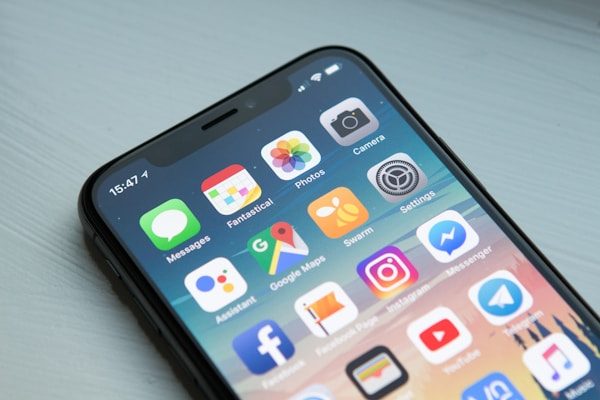Emma Wilson
UX Design Lead
Published
Nov 1, 2025

In the world of digital wallets, user experience isn't just about aesthetics—it's the difference between a pass that gets used daily and one that's immediately deleted. With 67% of users abandoning poorly designed mobile experiences and excellent UX increasing customer satisfaction by up to 400%, mastering mobile wallet design principles is essential for creating passes that users love, trust, and actively engage with.
In this comprehensive guide, we'll explore the proven UX best practices that transform ordinary digital passes into delightful, intuitive experiences that drive engagement, retention, and brand loyalty across Apple Wallet and Google Wallet platforms.
Understanding Mobile Wallet User Behavior
Before diving into design principles, it's crucial to understand how users actually interact with mobile wallets:
The Context of Use
Mobile wallet interactions are typically brief, high-pressure moments: standing at a checkout counter with people waiting behind you, rushing to catch a flight with boarding pass in hand, or entering an event while juggling bags and friends. These time-sensitive scenarios demand instant access to information without confusion or friction. Users expect to open their wallet and immediately see what they need—no hunting, scrolling, or squinting required.
User Expectations
Digital wallet users have high expectations shaped by years of mobile app experience:
- Instant Recognition: Within 3 seconds of viewing a pass, users should understand what it is, who issued it, and what action they can take. Anything slower frustrates users and damages trust.
- Glanceable Information: Critical details must be visible at a glance without expanding, scrolling, or tapping. Think of passes as mini-billboards—the most important information should jump out immediately.
- Contextual Relevance: Passes should appear automatically when and where users need them—event tickets surfacing as you approach the venue, boarding passes appearing at the airport, loyalty cards showing up at the store entrance.
- Reliability: Users must trust that their passes will work when needed. A single failure—a barcode that won't scan, a pass that doesn't load—can destroy confidence and drive users back to physical alternatives.
Visual Hierarchy and Information Architecture
Effective visual hierarchy guides users' eyes to the most important information first, creating an intuitive flow that matches their mental model:
The Information Pyramid
Structure your pass content in a clear hierarchy from most to least critical:
- Primary Information (Top Third): The absolute essential—boarding gate number, seat assignment, account balance, points total, barcode for scanning. This information should be large, bold, and impossible to miss.
- Secondary Information (Middle Third): Important but not urgent details—flight departure time, event date, location, membership tier. Use medium-sized, clearly readable fonts.
- Tertiary Information (Bottom Third/Back): Useful reference information—terms and conditions, customer service contacts, additional benefits. This can use smaller text and live on the pass back.
Typography Best Practices
Typography dramatically impacts readability and user experience in mobile wallets:
- Font Size Matters: Primary information should be at least 18-24pt, secondary information 14-16pt, and tertiary never smaller than 10pt. Remember users often view passes in challenging lighting conditions.
- Weight and Contrast: Use bold weights for critical information and ensure sufficient contrast ratios (minimum 4.5:1 for normal text, 3:1 for large text) between text and backgrounds for accessibility.
- Font Selection: Stick to system fonts or widely supported sans-serif fonts for maximum readability on small screens. Avoid decorative or script fonts for functional information.
- Text Length: Keep labels concise—"Gate B12" not "Departure Gate: B12". Every unnecessary word adds cognitive load and clutter.
Color Psychology and Brand Consistency
Colors do more than look pretty—they communicate meaning, create mood, and reinforce brand identity:
- Brand Colors: Use your brand's primary colors consistently to build recognition. Users should instantly know who issued the pass from its color scheme alone.
- Functional Colors: Reserve certain colors for specific meanings: red for alerts or expiring items, green for success or active status, yellow/orange for warnings or time-sensitive information.
- Background Considerations: Account for both light and dark mode. Test your passes in both scenarios to ensure text remains readable and brand colors look consistent.
- Accessibility Standards: Follow WCAG guidelines for color contrast. Never rely solely on color to convey information—always pair color coding with text labels or icons.
Designing Scannable Barcodes and QR Codes
The barcode is often the most critical element of a wallet pass—if it doesn't scan reliably, nothing else matters:
Barcode Placement and Size
Position barcodes prominently where users and scanners can easily access them. Place them in the lower third of the pass front, large enough to scan from 6-12 inches away (minimum 1.5 inches wide for 1D barcodes, 1 inch square for QR codes). Include the human-readable barcode number below the graphic—invaluable when scanners malfunction or as backup for manual entry.
Barcode Technical Requirements
Ensure maximum contrast between barcode and background—black on white works best. Leave adequate white space (quiet zone) around barcodes—at least 10% of the barcode width on all sides. Test barcodes with actual scanners in various lighting conditions before launch. Consider providing multiple barcode formats when platform allows as backup options.
Brightness Auto-Adjustment
Modern wallet apps automatically increase screen brightness when displaying barcodes. Design with this in mind—barcodes need excellent contrast but don't sacrifice overall pass design trying to maximize brightness manually. Trust the platform's brightness boost feature to handle scanning optimization.
Platform-Specific Design Guidelines
Apple Wallet and Google Wallet have distinct design paradigms that should inform your approach:
Apple Wallet Design Principles
- Predefined Layouts: Apple provides specific pass types (boarding pass, event ticket, store card, coupon, generic) each with predetermined field locations. Work within these constraints rather than fighting them—they're based on extensive user research.
- Field Hierarchy: Understand Apple's field types: header fields (most prominent, top of pass), primary fields (large, central information), secondary fields (medium importance), auxiliary fields (supporting details), and back fields (additional information).
- Logo and Strip Images: Use high-quality images that look sharp on Retina displays. Logo images should be simple and recognizable at small sizes (160x50 pixels). Strip images provide branding real estate (375x123 pixels).
- Lock Screen Integration: Leverage location-based and time-based triggers to surface passes on the lock screen at relevant moments—this is Apple Wallet's killer feature.
Google Wallet Design Principles
- Flexible Layouts: Google offers more design freedom than Apple, allowing custom layouts and more control over visual presentation. Use this flexibility wisely—just because you can doesn't mean you should overcomplicate.
- Hero Images: Google Wallet supports large header images that create visual impact. Use high-quality images that reinforce brand identity and pass purpose (1032x336 pixels recommended).
- Card Layout: Follow Material Design principles—card-based UI, appropriate elevation, consistent spacing. Google users expect Material Design patterns.
- Module Structure: Organize information into clear modules with proper grouping and hierarchy. Use text modules, links modules, and image modules purposefully.
Microinteractions and Feedback
Small details create delightful experiences that differentiate great passes from mediocre ones:
Real-Time Updates
Push notifications for critical updates (gate changes, balance updates, upcoming expirations) must be timely, relevant, and actionable. Don't over-notify—each alert should genuinely help the user. Update pass content in real-time when changes occur—seeing outdated information destroys trust. Display update timestamps so users know information freshness.
Loading States and Error Handling
Even on slow connections, passes should load quickly with progressive enhancement. Show skeleton screens or loading indicators for slower operations. When errors occur, provide clear, actionable messages—"Unable to load pass. Check your connection and try again" beats generic error codes. Include fallback options like customer service contacts when technical issues arise.
Haptic and Audio Feedback
While wallet platforms control most interactions, consider how your pass appears in notification contexts. Relevant, timely notifications with appropriate sounds and vibrations enhance user experience without being annoying. Test notification timing and frequency carefully—too many notifications train users to ignore them all.
Accessibility and Inclusive Design
Accessible design isn't just ethical—it's good business that expands your user base:
Visual Accessibility
- Color Contrast: Maintain WCAG AAA standards where possible (7:1 contrast ratio for normal text, 4.5:1 for large text). This helps users with visual impairments and improves readability in bright sunlight.
- Text Size and Scalability: Respect user text size preferences. Test your passes with larger system fonts enabled to ensure layouts remain usable.
- Color Blindness Considerations: Never rely solely on color to convey critical information. Use patterns, labels, and icons in addition to colors to differentiate statuses.
- Screen Reader Support: While platforms handle most screen reader interaction, ensure your field labels are descriptive and meaningful when read aloud.
Cognitive Accessibility
Reduce cognitive load by using simple, direct language without jargon. Maintain consistent layouts across all your passes so users develop familiarity. Group related information together logically. Avoid overwhelming users with too much information at once—prioritize ruthlessly and move secondary details to the pass back.
Content Strategy for Passes
The words on your pass are as important as the visual design:
Writing Principles
- Be Concise: Mobile screens are small and attention spans shorter. "Gate 42" communicates better than "Your departure gate is located at Gate 42."
- Use Action-Oriented Language: "Show at entrance" is clearer than "This pass may be presented at the entrance for admission."
- Front-Load Important Words: "Balance: $127.50" rather than "$127.50 (Current Balance)" ensures the key information appears even if text truncates.
- Avoid Jargon: Write for a general audience. Industry-specific terms confuse users and create barriers.
- Localization: Translate content for international users, adapting not just language but date formats, number formatting, and cultural references.
Labels and Field Names
Use universally understood labels: "Seat" not "Assigned Seating Location." Test with actual users to verify labels make sense. Consider using icons alongside text labels for international appeal and quick recognition. Keep labels consistent across all your passes to build user familiarity.
Testing and Iteration
Great UX doesn't happen by accident—it emerges through rigorous testing and iteration:
User Testing Methods
- Usability Testing: Watch real users interact with your passes in context. Can they find information quickly? Do they understand what actions to take? Where do they hesitate or get confused?
- A/B Testing: Test different designs, layouts, and content with actual users to see what performs better. Measure metrics like time to find information, task success rate, and user satisfaction.
- Field Testing: Test passes in real-world conditions—bright sunlight, dim venues, crowded situations. Does the barcode scan reliably? Can users read text in challenging lighting?
- Accessibility Audits: Test with screen readers, large text sizes, and color blindness simulators. Ensure passes work for users with diverse abilities.
Analytics and Metrics
Track key metrics to understand pass performance: installation rate (what percentage of eligible users add passes), usage frequency (how often users open and interact with passes), retention rate (how long users keep passes before deleting), support ticket volume (issues users encounter), and user satisfaction ratings. Use this data to identify problems and prioritize improvements.
Common UX Mistakes to Avoid
Learn from others' mistakes and sidestep these common pitfalls:
- Information Overload: Cramming every possible detail onto the pass front overwhelms users. Prioritize ruthlessly and move secondary information to the back.
- Inconsistent Design: Using different layouts, colors, or information hierarchies across pass types confuses users and weakens brand recognition.
- Poor Barcode Implementation: Small, low-contrast, or poorly positioned barcodes create scanning failures and frustrated users. Test barcodes extensively with real scanners.
- Ignoring Platform Guidelines: Fighting against platform conventions creates friction. Work with platform paradigms, not against them.
- Static Content: Passes that never update feel dead and get deleted. Regular, relevant updates keep passes valuable and top-of-mind.
- Neglecting Accessibility: Designs that work only for sighted users with perfect vision exclude significant portions of your audience.
- Unclear Value Proposition: Users should immediately understand why they should keep the pass. What benefit does it provide? Make this crystal clear.
Future-Proofing Your Pass Design
Design with flexibility for future updates and platform evolution:
- Responsive Layouts: While wallet platforms control much of the layout, design content that adapts gracefully to different field sizes and configurations.
- Scalable Assets: Use vector graphics and high-resolution images that look sharp on current and future high-DPI displays.
- Flexible Content Structure: Build your backend systems to easily update and modify pass content as requirements evolve.
- Stay Platform-Updated: Monitor platform updates and new capabilities. Apple and Google regularly add features that can enhance your passes.
Conclusion
Exceptional mobile wallet UX combines clear visual hierarchy, thoughtful information architecture, platform-specific optimization, and relentless focus on user needs. Great pass design isn't about cramming in features—it's about ruthless prioritization that surfaces exactly what users need, exactly when they need it, with zero friction.
Remember that UX is never "finished." User expectations evolve, platforms update, and your business needs change. Commit to ongoing testing, measurement, and iteration. Listen to user feedback, analyze metrics, and continuously refine your designs. The passes that succeed long-term are those that adapt and improve based on real-world usage and user behavior.
Ready to create exceptional mobile wallet experiences? Contact WePass for expert UX consultation and design services that transform your digital passes into delightful user experiences.



